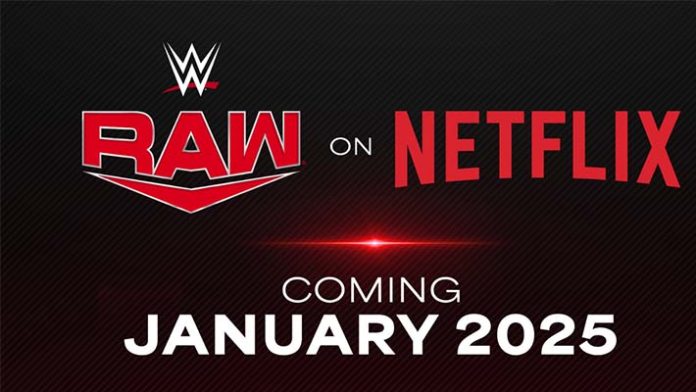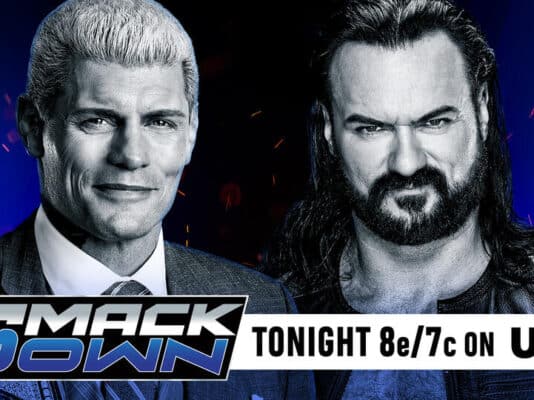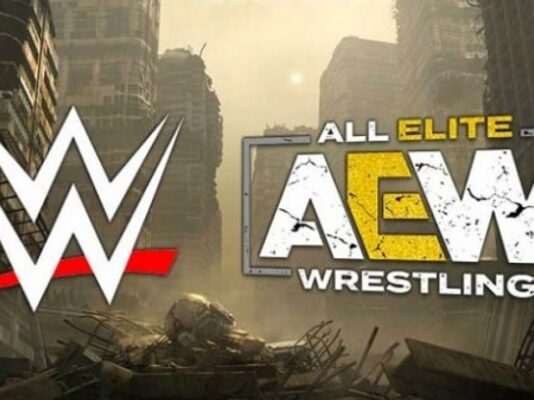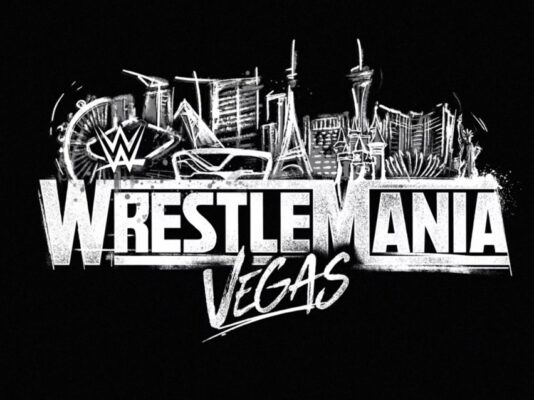
The TKO group announced a bombshell yesterday, a move that will not only impact the immediate future of the sports entertainment industry, but could also shape the direction of the industry for the rest of its history. After months of speculation, a deal for Raw’s next contract was made public as Netflix, the streaming giant, has secured not only the rights to broadcast the Monday night show domestically, but will have the full line-up for WWE programming, including Smackdown, NXT, and pay-per-views internationally. The 10-year deal will be worth more than $5 billion, with an option for Netflix to exit the contract after five years, but with an extension option that could theoretically stretch the contract to a total for 15 years.
Obviously, there are several layers and different aspects to this story, with a huge portion of that being how streaming distribution will effect the WWE brand, as well as how the streaming platforms as a whole continue to evolve within the media landscape.
It should be noted that the Netflix deal will bring Raw to the streaming platform in January of next year. Smackdown will move from Fox to USA in October of this year, while the NXT brand will shift to the CW.
As far as the prospects of the Raw contract, it’s a very similar paradigm to what I wrote a few weeks ago when Amazon Prime was rumored to be the leading contender to land the WWE flagship show. Within the previously mentioned crowded media landscape, and more importantly, the oversaturated streaming market, platforms are looking for the content that will allow them to secure their piece of the pie. As we know, Netflix was not only one of the first major players for streaming, but it also currently has the biggest streaming footprint. So, why would they invest such a massive amount of cash to more or less start the process to potentially become the exclusive provider of WWE content? The answer is rather simple, they will obviously bank on the continued growth of their platform from new subscriptions from the WWE’s global fan base and another major aspect is that adding the WWE product to its line-up will prevent another streaming platform from using the sports entertainment brand to secure more of the streaming dollar. Keep in mind, as I said before, the pitfalls of the streaming model, particularly when customers will cherry-picking certain months to subscribe for specific content, are some of the reasons why some platforms either consolidated with another service or even lost money. For example, Disney+ has lost a massive amount of money on their streaming platform in recent years because the costs of productions are at a certain level regardless of how many people are subscribed to watch it. If a more expensive production doesn’t add more subscribers or at least maintain the current number of subscribers to cover the costs involved of the new content then the platform will lose money on the project. Granted, the upside of the bulk-pricing model that Netflix has been very successful with is that it can generate more subscribers at the lower price to generate more revenue overall than the money that would’ve been made if the content was released at a higher price on an individual basis.
Again, the key to success for any subscription-based model is the ability to maintain subscribers and to avoid customers cherry-picking as a way to maximize revenue.
This WWE deal just gave Netflix customers or at the very least a large portion of the WWE fan base a weekly reason to subscribe to the streaming platform. For the publicly-traded corporation, this is a total win, as it guarantees them a few billion dollars, which will keep the stock price steady. When you take into account the $1.4 billion that USA agreed to for the rights to Smackdown for that five-year contract, the NXT contract for the CW, and the addition of the newly-announced Netflix deal, the WWE will generate around $800 million per year just for their TV rights deals. That’s guaranteed money and most importantly, guaranteed record-setting profits for the next several years. As a corporation on the stock market, that’s the best news possible for shareholders and thus the overall value of the company. Of course, Netflix wants to make a profit on the deal, and if they don’t then they have the option to terminate the contract in five years, but again, assuming Netflix adds to its subscriber base with the addition of WWE programming then its a win-win for everyone involved on the business side of the agreement. It goes without saying that the trade off for the guaranteed cash that Netflix is offering is that they hope to make their profit from the deal over the course of time as the WWE brand continues to grow internationally through the increased accessibility to the product on the platform. That increased value on the contract for Netflix would also mean more value of the WWE brand. In preparation to attempt to maximize revenue for the start of the contract in 2025, Netflix already mentioned price increases, including the elimination of the cheapest price option currently available for the service.
Outside of the domestic dollars and cents, this move also increases the WWE’s global footprint since the contract covers every country where Netflix is available so the WWE doesn’t have to negotiate individual deals in specific countries to increase accessibility to programming. As we know, the company has made hefty cash when it was paid to bring major events to other countries. The Saudi Arabia contract is the best example, but with increased exposure, it wouldn’t be surprising to see more events in foreign countries, especially within the next decade.
However, there’s a concerning aspect to this as far as a long-term basis.
I hope I’m wrong, but it’s possible that putting the WWE’s most storied television show behind a paywall might actually erode the audience over time, or at the very least reduce the domestic fan base. Granted, Netflix is the most well-known streaming platform, but are fans really going to pay $15 a month to watch Raw, especially when the show has been on free TV for more than thirty years? There has undoubtedly been a recent upswing in WWE programming with the return of CM Punk, but were most episodes of Raw in the past few years worth paying to watch? As a comparison, access to pay-per-views and the massive WWE video library is currently $4.99 a month on Peacock, a deal that runs through March 2026 so it might be a tough sell to get the casual fan to pay $15 a month to subscribe to Netflix to watch Raw that theoretically builds up to the pay-per-views on a cheaper platform. Most importantly, and this is still a relatively unproven concept, will the general public be willing to pay for access to WWE television? Regardless of the price point, a paywall is still a barrier to entry and that might make it more difficult to make new fans in the future. Keep in mind, the Netflix deal has the potential to be a 15-year contract, what happens if an entire generation of potential fans aren’t as invested in the product because half of the TV programming requires a Netflix subscription? Along the same lines, especially for the casual fan, watching two hours of Smackdown each week on USA might be enough for them in terms of wrestling content and thus it wouldn’t be necessary to pay for watch Raw.
As much as some predicted the downfall of traditional television for years, it’s still the most common form of media viewership, and as we’ve seen, the streaming market was flooded with so many options that it become a similar scenario to cable so while the Netflix deal might be successful because of the scope of the platform, this doesn’t mean the pro wrestling on regular cable is suddenly an antiquated concept. There’s a reason USA paid more than $1 billion for the rights to Smackdown. Furthermore, the ability to make new fans and to ensure the next generation of the fan base will still be based on easy accessibility to the product. Those that will subscribe to Netflix to watch Raw are those that are already fans of the show, but the programming on free TV is still how the company will make new fans. Along those lines, Smackdown basically becomes the top show for the company almost by proxy because it’s not behind a paywall.
Finally, I’m skeptical of how successful Raw will be, at least in the United States, being put behind a paywall, simply because the audience is so used to the Monday night staple on traditional TV. It’s uncharted territory and almost strange to think that the show that was so associated with the biggest boom in the history of the business and the ratings war with Nitro each week won’t have ratings. The barometer of success will be how many added or maintain subscriptions for Netflix, not how many people actually watch the show, and that muddiest the waters somewhat as far as how to gauge the effectiveness of the angles. WWE fans aren’t used to paying for Raw and with the economy still uncertain, it might take some time to get fans to want to add the extra expense to their wrestling budget. However, the biggest takeaway from this story is that this is major business on a global level and it’s a move that is designed to build the brand in the future as an even more international fan base can be used to generate revenue for the company. The WWE brand isn’t just trying to draw money domestically, they look to maximize the revenue possible from its content on a global level and thus become a truly global brand within the next decade for the company.
What do you think? Share your thoughts, opinions, feedback, and anything else that was raised on Twitter @PWMania and Facebook.com/PWMania.
Until next week
-Jim LaMotta
E mail [email protected] | You can follow me on Instagram, Facebook, & Threads @jimlamotta89












